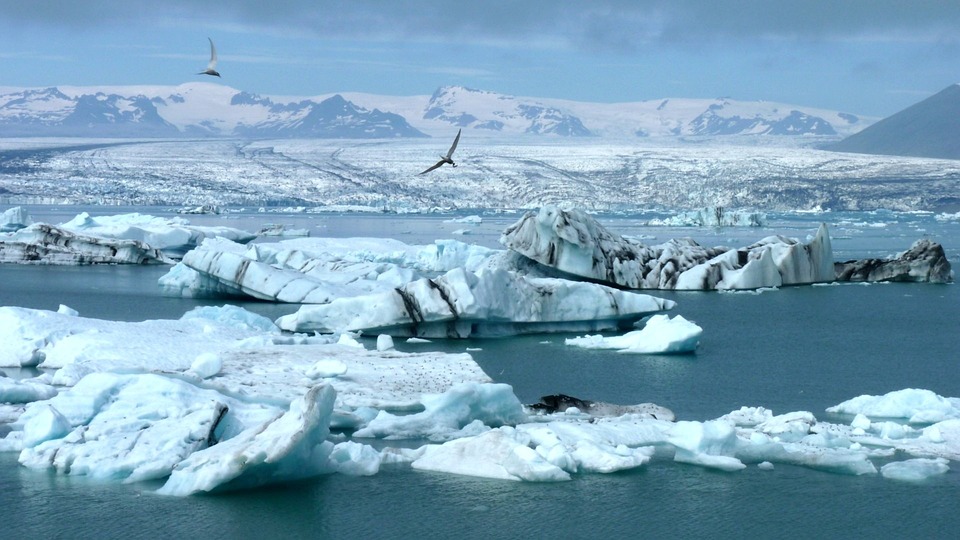The Arctic Ocean: A Unique Ecosystem
The Arctic Ocean is a vast and mysterious body of water that plays a crucial role in the Earth’s climate and ecosystem. Located at the northernmost part of our planet, the Arctic Ocean is home to a unique and diverse array of species that have adapted to survive in one of the harshest environments on Earth.
Physical Characteristics
The Arctic Ocean covers an area of approximately 5.4 million square miles, making it the smallest and shallowest of the world’s five oceans. It is bordered by Russia, Canada, Greenland, and several other countries, and is connected to the Atlantic Ocean by the Bering Strait and the Pacific Ocean by the Bering Sea. The Arctic Ocean is covered by sea ice for most of the year, with ice floes varying in size from small pieces to massive icebergs.
The average depth of the Arctic Ocean is around 1,038 meters, with the deepest point being the Fram Basin at 4,665 meters. The Arctic Ocean is known for its extreme cold temperatures, with surface waters rarely rising above freezing even during the summer months. These frigid temperatures make the Arctic Ocean a challenging environment for many species to survive in.
Unique Wildlife
Despite its harsh conditions, the Arctic Ocean is home to a wide variety of marine life that has adapted to thrive in this unforgiving environment. Some of the most iconic species found in the Arctic Ocean include polar bears, Arctic foxes, seals, walruses, whales, and a diverse range of fish and invertebrates.
Polar bears are perhaps the most well-known inhabitants of the Arctic Ocean, as they rely on sea ice to hunt for seals and other prey. These massive predators have evolved to survive in the cold temperatures of the Arctic, with thick layers of blubber and fur to keep them insulated from the freezing waters.
Arctic foxes are another species that have adapted to the harsh conditions of the Arctic Ocean. These resourceful animals have a thick coat of fur that changes color with the seasons, allowing them to blend in with the snowy landscape and hunt for small mammals and birds.
Seals and walruses are also common sights in the Arctic Ocean, as they rely on the sea ice to haul out and rest between hunting trips. These marine mammals play a crucial role in the Arctic ecosystem, serving as prey for larger predators like polar bears and whales.
Whales are some of the largest and most majestic creatures found in the Arctic Ocean, with species like beluga, narwhal, and bowhead whales making their home in these icy waters. These massive animals migrate to the Arctic each year to feed on the abundant fish and plankton found in the region.
Threats to the Arctic Ecosystem
Unfortunately, the Arctic Ocean and its unique ecosystem are facing a number of threats from human activities and climate change. The melting of sea ice due to rising temperatures is causing habitat loss for many species that rely on the ice to survive.
Oil and gas exploration in the Arctic Ocean also poses a significant threat to the fragile ecosystem, as spills and leaks can have devastating impacts on marine life and the surrounding environment. Pollution from shipping and fishing activities is another concern, as plastic waste and other debris can harm wildlife and disrupt the food chain.
Climate change is perhaps the biggest threat facing the Arctic Ocean and its inhabitants, as rising temperatures are causing rapid changes in the region’s ecosystem. Invasive species are moving north as temperatures warm, competing with native species for resources and disrupting the delicate balance of the Arctic ecosystem.
Conservation Efforts
Despite these challenges, efforts are being made to protect the Arctic Ocean and its unique ecosystem. Conservation organizations are working to establish marine protected areas and wildlife reserves to safeguard critical habitat for endangered species like polar bears and whales.
International agreements like the Arctic Council aim to promote cooperation among countries bordering the Arctic Ocean and address issues like climate change and pollution. Scientists are also conducting research to better understand the impacts of human activities on the Arctic ecosystem and develop strategies to mitigate these effects.
By raising awareness about the importance of the Arctic Ocean and its unique ecosystem, we can help ensure that this fragile region remains a thriving and biodiverse environment for future generations to enjoy.
Conclusion
The Arctic Ocean is a truly unique and fascinating ecosystem that plays a vital role in the health of our planet. Despite its harsh conditions, the Arctic Ocean is home to a diverse array of species that have adapted to survive in this challenging environment. However, the Arctic ecosystem is facing increasing threats from human activities and climate change, which are putting the region’s wildlife and habitat at risk.
It is crucial that we take action to protect the Arctic Ocean and ensure that its unique ecosystem remains intact for future generations to appreciate and enjoy. By working together to address these threats and promote conservation efforts, we can help safeguard the Arctic Ocean and its inhabitants for years to come.
